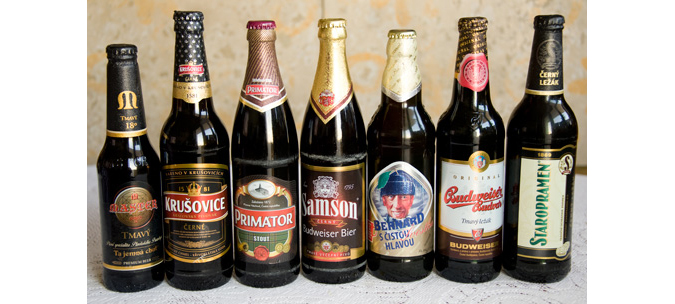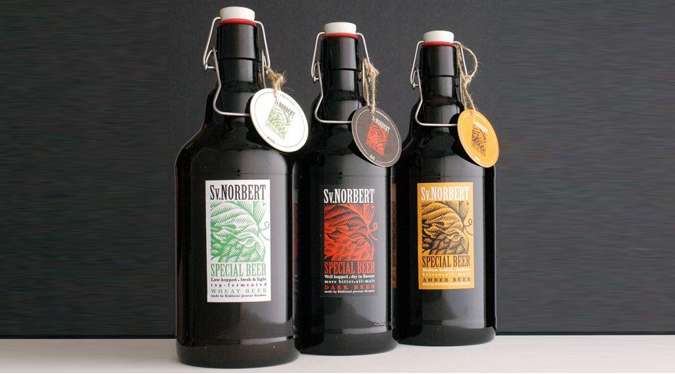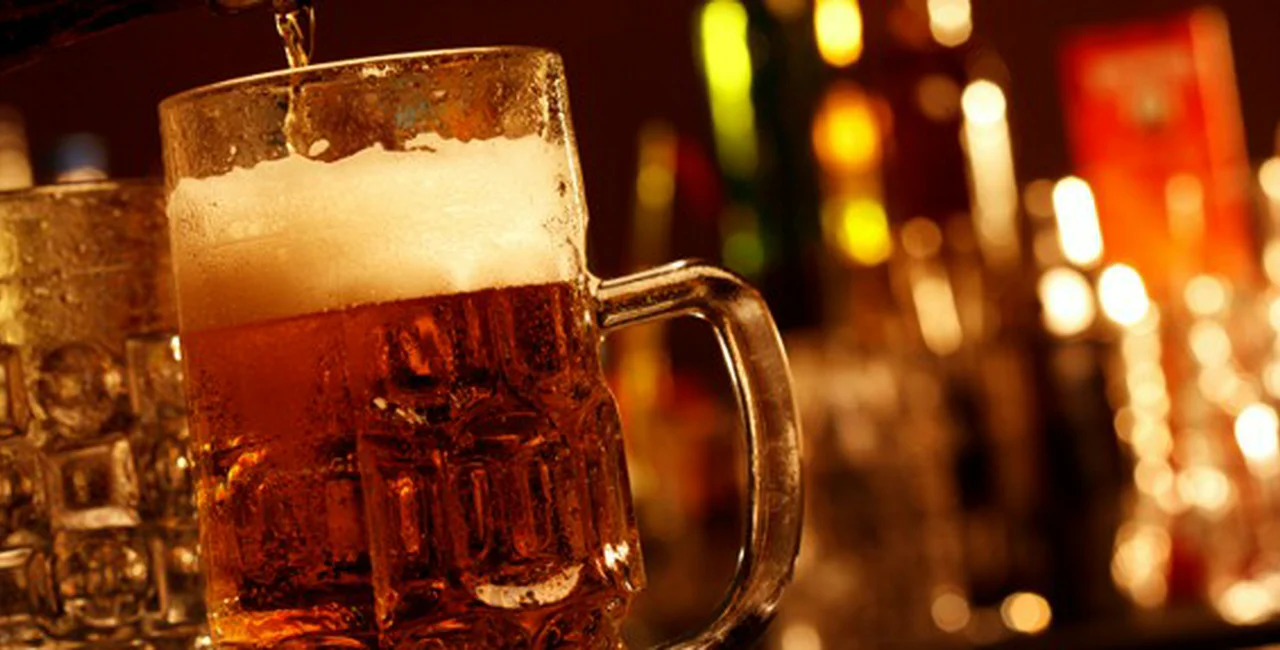In this land of lagers, you might think it impossible to fill your cup with anything other than the golden, bottom-fermented beers that we all know and love.
We will take a brief look at the way the Czech Republic legally categorizes beers. We will also look past these arbitrary categories into the Czech Republic’s thriving beer culture.
A quick note on how beers are advertised and measured. You may have noticed 10° or 12° (desítka and dvanáctka, respectively) on your bottle or in your local watering hole. This measurement is known as the Balling scale, which measures how much sugar is present before fermentation happens in the brewing process. Simply put, this tells you how much alcohol will be in your beer.
Legal Categories of Czech Beer
Lehké (literally, light in weight): the lowest on the Balling scale and, in turn, the lowest in alcohol. These beers come in at 8° or less on the Balling scale and have around 3.5% abv (alcohol by volume).
Výčepní (tap): not the most accurate title. Výčepní pivo (tap beer) does not flow exclusively from a tap, as the name would suggest. The vast majority of beer consumed in the Czech Republic fits in this category, and is between 8° and 10.99° on the Balling scale and anywhere from 3.5% to just under 5% abv.
Ležák (lager): 11° to 12.99° Balling and up to 5.7% abv.
Speciál (yep, it means special): Is reserved for 13° beers and higher.
All this is perhaps interesting, but of less use to the consumer than the following.
Common Brands and Styles
These are what I call grocery store beers or supermarket beers, simply because you will find them at your local supermarket or potraviny. Also, this group is quite easily found in your local hospoda.
Most likely, you have tasted and will recognize several of these major brands: Pilsner Urquell, Budvar, Staropromen, Velkopopovický Kozel, Radegast, and Krušovice. Other brands such as Svijany, Opat, Primátor, Bernard, Ježek, Rychtář, Březňák, and Ferdinand all have a strong presence in Prague. You may have to check a few different supermarkets to round these up, and even then it will be difficult to find anything beyond the following styles:
Světlé (light in color) or Ležák (lager) can normally be ordered as 10° or 12°. Furthermore, the 11° (jedenáctka) is becoming more popular, as Gambrinus Excellent has shown. It is also possible to find 13° (třináctka), such as Svijany’s Kníže. Three small breweries making great beers in this style are Kout na Šumavě, Únětice, and Bašta (a brewpub in Prague’s Nusle district). You will have to seek these three out, but it will be worth it.
Tmavé (Dark) is also a lager, though much darker in color and usually much sweeter.
Polotmavé (half dark), often referred to as Granát, tends to be a touch sweeter than světlé. The largest brewery in Prague, Staropromen, uses this term.

Less Common Styles
Kvasnicové pivo (yeast beer), also known as Kvasničák: Svijany’s Kvasnicové, tapped at U Prince Miroslava, goes down well in the early afternoon. Staropromen also brews a drinkable kvasnicové served from the tap at Na Verandách; Pivovar Harold and Chotěboř also produce kvasnicové. This style has captured my heart and I strongly recommend that you try it when you see it.
Pšeničné (wheat) is a cloudy and delicious beer, often sold under its German name Weissbier. Many of the Czech brewers have brought this style back to the Czech market. Good places to start: Pivovar u Bulovky, Pivovarský Dům, Pivovar Strahov, Matuška all make a solid pšeničné. Further, Primátor’s Weizenbier can be bought in bottles quite easily and is a fine beer. For a Weizenbock, Pivovar Strahov does an outstanding job; also try the Kocour Weizenbock.
Jantar (amber) is not seen often, allthough it is a great amber ale. Kocour and Pivovar Strahov both brew this style. Bernard also makes a non-alcohol version.

Ochucené pivo (flavored beer) can be found at Pivovarský Dům, where they have quite a lineup of flavors such as kávové (coffee), višňové (sour cherry), banánové (banana), and kopřivové (nettle). Pivovar Bašta has recently brewed a green 12° Wasabi beer – that’s right, the Japanese condiment wasabi. Flavored beers can be worth a try, but I have never been impressed.
Nakouřené pivo (smoked beer), also known as rauchbier, is an interesting beer if you are in the right mood. Eggenberg and Kocour are two breweries that produce this style.
Holiday beers are something I look forward to each year. Vánoční (Christmas) beers are usually dark, could be a porter or doppelbock, and will usually contain more alcohol than the breweries’ regular offerings. Velikonoční (Easter) beers may be a lager or something darker, but again will normally have a higher alcohol content.
Tankové (tank) is not a style but a storage and serving method. This beer is unpasteurized and always fresh. For a fine tank beer try the restaurant Lokál. Another way beer is served here is in a 50/50 mix of světlé and tmavé – just ask for “řezané pivo” (mixed beer). Finally, many breweries are producing a nefiltrované (unfiltered) version of their beers. I find these to have more character than their filtered counterparts.
Craft Beers
There are brewers that are taking some risks and making beers that are starting to win hearts and souls. Beers ranging from India pale ales, weissbiers, English pale ales, American pale ales, stouts, porters, saisons, and bocks. With breweries like Chýňe, Pivovar Strahov, Kocour, Matuška, and Třebonice, it is an exciting time to be drinking in the Czech Republic.
With some information and a willingness to explore, you can have a blast tasting the huge array of styles made by Czech brewers. I am currently hoping to find a good American-style brown ale and a cheek-puckering sour. If you have any recommendations, please share.
If I have left out your favorite brewery, beer, or style feel free to comment, or just tell us about your beer drinking adventures.
***
Deciphering Czech food products series:
- Dairy – A helpful guide to milk, butter, yogurt, and more..
- Beef Cuts – How to ask for what you need at Czech butcher’s?
- Czech Potatoes – How it Rose from the Underground to Czech Tables Everywhere
- Beer – Czech Beer’s Got Style
- Bread – A guide to bread and other baked goods
- Cold Cuts – We look at ham, sausage and other goodies
- Cheese – Czech (and Slovak) Cheeses
- Flour and other baking products
- Vegetable – We take a stroll through the Czech veggie section
Related articles
- Farewell Fake Rum? A Short History of the Endangered Czech Spirit
- Cocktail Emporium with Prague-Themed Drinks Opens on Wenceslas Square
- Prague Named among Top 10 Vegan-Friendly Capitals In 2017
- Czech Republic Will Continue to Fight Inferior Food Quality
- Take a Look Inside Prague’s New Temple For Meat Lovers












 Reading time: 5 minutes
Reading time: 5 minutes 






















